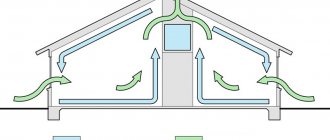LED lamps are popular due to their lower energy consumption, their fire safety and the emission of light that is comfortable to the eye. But it happens that when screwed into the socket, problems arise - the lamps begin to glow dimly when they are turned off. LED lighting operates on constant voltage and glows on alternating voltage. To find out why an energy-saving light bulb lights up when the switch is off, you need to understand the device itself and analyze the possible reasons.
How to fix the problem
There are several methods to get rid of the fact that the light bulb glows after being completely turned off:
- If the switch has a backlight, then it needs to be replaced or the LED removed.
- Initially poor quality of the product also affects the correct operation. Then the lighting device must be replaced with a new and higher quality one.
- If the problem is an incorrect installation, you can fix it yourself. To do this, you should check whether the light bulb is actually screwed in well.
- If the reason is a current leak, then you need to find this place and close it, thereby eliminating the problem that occurs after the lighting is turned off.
In the latter case, uncontrolled leakage occurs due to incorrect wiring. Fluorescent lamps are sensitive, so they require a small amount of voltage to operate. If the lamps shine clearly, then it is enough for them. Sometimes it happens that the flickering occurs in periods, not quite smoothly, goes out and lights up again. This may mean that the light bulb is not getting enough current, which builds up over time and then spills out into the LEDs.
Usually on the labels you can find operating instructions, with characteristics and installation tips. But it happens that you can stumble upon a fake. In such circumstances, you need to inspect the packaging and study what is written on it to check the quality of the product.
We recommend watching the video:
How harmful are burning lamps?
As mentioned above, one of the most common problems with LED operation is the inability to completely turn off the light source. The lamps continue to burn at approximately 5% of normal power for several minutes or even hours.
Sometimes dim lighting tires apartment dwellers, but some use dimly lit lamps as night lights.
It is worth adding that the defect does not have a harmful effect on the condition of the wiring, and energy consumption increases extremely slightly, since LEDs consume a small amount of electricity.
All manipulations with wiring, including disconnecting the wire, connecting or replacing parts, must be carried out only after turning off the electric current.
However, experts advise eliminating the problem as soon as possible, since the residual glow of LEDs significantly reduces their service life. In addition, the reasons that cause this phenomenon can lead to serious troubles.
What should I do to make the lamp stop glowing or blinking when turned off?
Having done this, no current will flow to the charging capacitor, after which the lamp will no longer glow dimly or blink;
If you want to avoid this problem, then before purchasing a switch, pay attention to the presence or absence of backlighting. If it is not there, then the main problem will not appear; A good option would be to connect a regular lamp in parallel; using this option will prevent the energy-saving light source from burning when turned off.
This is achieved due to the fact that the current to recharge the capacitor will go to the filament (This method is not very good for just one reason. The purpose of purchasing LED lamps is to save energy and have a longer service life compared to incandescent and halogen lamps. When added to the circuit of a conventional lamp increases consumption, and accordingly all savings are lost. As a result, this solution is not ideal);
There are switches that have mandatory backlighting needed for some purpose. What to do in this case, and what actions to take?
A good solution to eliminate this problem would be to connect a resistor in parallel, which will help create additional resistance in the desired section of the electrical circuit. The main advantage of this method is its cheap price; you can purchase a resistor in absolutely any radio equipment store.
It is worth noting that the resistor will not negatively affect the normal operation of the LEDs. But when the switch is turned off, the backlight will work, and accordingly the resistor will consume current, which goes to charge the capacitor. Also don't forget to insulate the resistor, the best way to do this is to use heat shrink tubing.
You can connect it under the ceiling in a lampshade or in a lamp socket. For a more convenient connection of the resistor, a good option would be to use special Wago terminal blocks (in the image below).
The final step is to place the resistor in the box, after which you can enjoy the absence of blinking of the LED lamp after turning off.
Pros and cons of LEDs
Such products have gained popularity among the population due to a number of positive qualities. Their main advantage is their efficiency: the lamps have a long service life, which is confirmed by a three-year warranty. In addition, they require a minimal amount of energy to function.
Environmental safety is also an important advantage. LED devices do not emit ultraviolet waves, which can harm living organisms. They are designed without hazardous materials, making them easy to dispose of.
A detailed image of the structure of an LED lamp with the designation of all elements, as well as informative captions that tell about the purpose of the nodes
The disadvantages of LED devices include, first of all, their high cost. It should also be taken into account that their operation has specific features: sometimes the LEDs blink or do not turn off even after the switch is turned off.
These disadvantages are caused by the conservation of charge that accumulates in the capacitor. A weak pulsating current leads to flashing, and a stronger one creates a long-lasting glow.
How to purchase LED devices correctly?
If you are planning to buy LEDs, then remember that reliable manufacturers will always indicate instructions on the packaging that will help you understand the correct principle of their use. Usually, it is indicated that use is undesirable in conjunction with such devices as backlit key switches, photocells, brightness controls, timers, etc., they will interfere with their operation in normal mode.
It may also be that you simply cannot choose quality products. There are a lot of fakes on the market that are very difficult to distinguish. And if you have already come across a product that lights up after being turned off, then the reason for this may well be that the LEDs are simply installed incorrectly.
Flashing LED lamps how to get rid of the problem
I welcome all visitors to the “Electrician in the House” website. Today I want to look at the question of why the LED lamp blinks when it is turned off and how to get rid of the problem, which, as it turns out, worries many users. The question seems to be simple, but for some reason many people have difficulty solving it. This article will be an addition to one previously published on the same topic. If you remember, in the last article we looked at the reason for the blinking of energy-saving lamps. To solve the problem, a resistor was used. It was connected in parallel with the lamp, which in turn solved the problem with the blinking energy saving light.
On my YouTube video channel there is even a video on how to fix the problem. But there are a lot of comments. It is clear that people do not understand how to get rid of the problem. Some liked the solution using a resistor, others did not. Many people are looking for a solution in dismantling the backlight on the switch. Some people advise placing a regular incandescent lamp parallel to the LED lamp. This will certainly solve the blinking problem, but this option is not suitable for everyone.
Today, energy-saving lamps are being replaced by LED analogues. But the problem remains; when the switch is turned off, the effect of blinking LED lamps occurs; we will discuss how to get rid of this problem in this article.
I want to say right away that the effect of lamp blinking when turned off is observed regardless of whether the lamp is energy-saving or LED. Therefore, this solution method can be applied to any types of lamps.
Higher quality LED lamps do not blink, but such specimens are correspondingly more expensive. Not everyone can afford to buy a light bulb for $10. And if you consider that 5-6 such light bulbs are required per apartment, then the price generally turns out to be unaffordable for the family budget.
Why do LED lamps work after being turned off?
The glow of the device when it is turned off can be caused by several reasons.
Operation of the capacitor included in the driver
The ability of an LED lamp to continue to work when the light is turned off causes quite a logical surprise among many consumers. Electricity is not supplied, but the device is functioning. The next question then arises: where does the food come from? Some electronic components are capable of storing electrical energy. A capacitor is one of them. It is part of the LED lamp. While it glows from the network, it accumulates electricity. When the electricity is completely turned off, the capacitance releases the accumulated energy and acts as a voltage source in this case. It is because of this detail that LED lamps may burn briefly after being turned off.
The capacitance is considered reactance, since it is capable of returning consumed power to the network. If it were not an integral element of LED lamps, then they would not be able to shine when the electricity was turned off. Similar to how ordinary lamps stop working after being turned off, because they are very simple devices that do not contain reactive elements. When the electricity stored by the capacitor runs out, it stops being a power source and producing voltage, as a result of which the LED lamps stop receiving energy and go out. In this case, the accumulated charge is only enough for a few seconds to maintain the operation of the device after switching off.
It is unlikely that this couple of moments of glow needs to be eliminated. Moreover, capacitance plays an important role in power conversion: it smoothes out ripples in voltage after a decrease.
LED switch
If the LED lamp glows for a long time after being turned off, then the reason is different. The lighting fixture may be used in conjunction with a switch. Very often they use an LED switch, which, in addition to the main function of disconnecting the electrical circuit, also performs an additional function: it lights up when the lamp is turned off. To do this, it is equipped with an LED, which is supplied with voltage when the light bulb is not working. Thanks to the parallel connection, no power is supplied to the lamp. That is, at this moment, an electric current passes through the switch LED, which charges the above-mentioned capacitor. When the latter accumulates a sufficient amount of electricity, it begins to send it to the network, acting as a power source. LED light bulbs receive this electricity and glow. After the reactive element is discharged, there is no energy and the light bulb stops burning. The capacitor is then charged again and the process repeats. It will light up and then go out, which visually looks like blinking.
It is necessary to consider what can be done to eliminate the described defect.
What you need to fix an LED light bulb
You don't have to purchase anything fancy from tools. Every family usually has a soldering iron, preferably one with a thin tip. Along with it there is usually solder and rosin (or flux containing solder) or soldering acid. You will also need tweezers - you can’t go anywhere without them.
In addition, for comfortable work, it is advisable to have a holder (third hand) or an assistant who will hold the board with LEDs. To quickly heat up the board with LEDs, we recommend using a compact gas torch . It will allow you to quickly unsolder a burnt-out LED and instantly solder the old one in its place. You can buy a gas burner at any tobacco store and the cost is about 350 rubles. But, if you do not intend to spend a lot, a turbo lighter .
But the main component of our repair kit is another failed LED lamp, preferably of the same type. It is she who will serve as a donor of spare parts for the light bulb being repaired. Because Usually only 1 LED burns out, then 7 others will be useful to you for repairing faulty devices.
And yes, after you fix the light bulb, you will need to glue its shade back to its original place, which means you need to stock up on super glue (or similar transparent glue for plastic).
Removing the backlight
The design of illuminated chandeliers includes a board that includes an LED or small neon bulb. It is necessary to disassemble the switch, armed with a screwdriver, and remove this board. The backlight will not work, but the light bulb will stop blinking.
The negative point is that the scheme is associated with a strictly defined number of starts. Own reserves, as a rule, are only enough for 1-2 months. After this, we can safely say that it’s time for the lamp to go in the trash. The same applies to situations where low-power LED power supplies are used.
A serious manufacturer will certainly provide information about which lighting devices the lamp cannot be used with. For example, some write that when using a lamp you should not use a backlit switch. If these conditions are not met, the light bulb will operate abnormally. It seems to begin to work at the limit of its permissible loads and quickly fails.
Why does the LED lamp light up when the switch is off?
There are several common reasons why LED bulbs glow when the switch is off:
- Low quality insulating materials.
- Using an illuminated switch.
- Low quality light bulb.
- Problems with electrical wiring.
- Features of the power supply circuit.
Poor quality insulation
Insufficient quality insulation in any part of the electrical circuit often causes problems with light. This malfunction has the most serious consequences, because to correct it you will need to disturb the finishing layer on the walls in order to replace the insulation.
To check the insulation for current leakage, apply high voltage to the network for 1 minute. This is necessary to simulate the conditions under which breakdowns occur in the electrical circuit.
Using Illuminated Switches
The answer to the question of why an LED lamp glows when the switch is off lies in the use of an illuminated switch. The inside of such a device contains a light diode with a current-limiting resistor. The reason the lamp glows is that even when the contact is disconnected, voltage still passes through them. However, the light bulb does not glow at full power, since the circuit contains a current-limiting resistor.
The lamp lights either constantly (if the current is sufficient) or intermittently (flashes because the current is too weak). However, even in the latter case, the current is sufficient to recharge the capacitor. As soon as sufficient voltage accumulates in the capacitor, the stabilizer chip turns on, and the light bulb immediately lights up. Operating the lamp in this mode leads to its rapid wear, since the number of operation cycles for microcircuits is finite.
In this case, there are several methods to eliminate the problem of a burning light bulb. The easiest way is to remove the backlight from the switch. To do this, dismantle the housing and remove the wire directed to the resistor or light diode. It is also possible to replace the switch with another one that does not have a backlight function.
Another way to solve the problem involves soldering a shunt resistor parallel to the light bulb. You will need a 2 watt resistor with a resistance of up to 50 kOhm. If you do this, the current will flow through this resistor, and not through the light bulb power driver. Installing the resistor is not difficult. You just need to remove the lampshade and secure the resistance legs in the terminal block for connecting the network conductors.
If you do not have sufficient knowledge of electrical engineering, you can do something simpler. To do this, place a regular incandescent lamp in the lighting fixture. The spiral of the light bulb will serve as a shunt resistor when turned off. However, this option is only suitable if there are several cartridges in the lighting fixture.
Low quality light bulb
Often the cause of a malfunction is an insufficiently high-quality lamp. In this case, there is only one way to solve the problem - replacing the product with a better one.
Electrical wiring problems
If errors are made during the installation of electrical wiring, one of the consequences of this may be the lamp glowing when the switch is already turned off. This situation happens when the zero is confused with the phase, and even after disconnecting the wires remain under the phase.
The situation should be corrected not only to get rid of the unnecessarily burning light bulb. This is also to avoid electric shock when replacing the lamp.
Features of the power supply circuit
To provide a brighter glow and reduce light ripple, a high-capacitance capacitor is sometimes added to the power supply circuit. This results in the fact that even when the switch is turned off, there is still enough charge in it to allow the LEDs to glow.
Recommendations for choosing electrical appliances
One of the important factors for the smooth operation of LED lamps is the choice of products of appropriate quality. In this case, one should take into account the features under which the devices will have to function, as well as their compatibility with other equipment connected to the power grid.
Before purchasing, it is recommended to carefully read the instructions supplied with the LED devices, which indicate the operating rules. It should be noted that a number of popular devices, such as dimmers for LEDs, timers, photovoltaic modules, can cause problems with the operation of LEDs.
It is also important to carefully examine the appearance of the light bulb, paying attention to the joint between the body and the base, which should be securely adjacent to the main part without any defects. If there are scratches, dents or sloppy seams, the likelihood of problems with the glow increases significantly.
There are also advanced LED lamp technologies, such as those using LED filaments. Although their cost is slightly higher, it is compensated by their long service life and excellent quality.
An element such as a radiator is important. It is best to choose an LED in which it is made of aluminum, but ceramic and graphite analogues also have high performance. The size of this part, which is responsible for the removal of thermal energy, the release of which can also occur when the light is turned off, is also important.
For a high-power LED to operate correctly, it is necessary to use a large radiator, while for a weak device a compact one will be sufficient.
As a rule, in specialized stores, sellers test turn on the lamp. In this case, you need to try to check the flicker level: the lighting device should emit an even luminous flux without any pulsation.
Since it is quite difficult to assess this factor with the naked eye, it is better to film the device turned on with a mobile phone video camera. The recording will allow you to better evaluate his work.
Features of LED lamps
LED bulbs have a slightly more complex internal structure compared to conventional incandescent bulbs.
Main elements of an LED lamp:
- Nickel-plated brass base. These materials avoid corrosion processes and also ensure good contact with the cartridge.
- The base of the plinth is made of polymer (polyethylene terephthalate). The material protects the device body from electricity.
- The driver is based on a galvanically isolated current stabilizer modulator circuit. The driver's task is to create conditions for stable operation of the light source even in the event of power surges.
- The radiator is made of anodized aluminum alloy. The coating allows heat to be removed from those surfaces of the lamp that are not allowed to overheat.
- Aluminum printed circuit board. The component guarantees the desired temperature regime for the chips by dissipating heat to the radiator.
- Chips. They represent a key element of the system. They are also called diodes.
- Diffuser. It is a glass hemisphere with the highest level of light dispersion achievable within the technology.
The operating principle of LED lamps is based on the release of photons. This occurs as a result of permanent change and the appearance of multiple combinations of electrons. Uninterrupted changes are ensured by the presence of conductors. To optimize the process, resistors or current limiting devices are used.
How to remove the glow?
Having determined the reason why the LED bulbs light up when the lights are turned off and having identified the passage of small currents in the load circuit through the indicator, you can remove this effect in several ways:
- turn off the indicator by disconnecting its power supply contacts;
- connect a resistor in parallel to the lamp (the resistance value must be determined for each case separately);
- replace the switch (set without indication);
- perform a simple installation of the circuit, keeping the indicator working and removing the stray glow.
A good option would be to connect a resistor in parallel. It will create additional resistance in the required section of the electrical circuit, which will prevent flickering. Installing a resistor will not have a negative impact on the smooth operation of the LED. The glow will be just as bright and pleasant. However, to achieve this result, it is necessary to correctly select the power dissipation and electrical resistance of the part, which cannot be done without the appropriate knowledge and skills.
A simpler and more reliable option is to make changes to the indicator’s power circuit. On the backlit switch itself, there are input and output markings (usually there are two terminals at the output, and one at the input (the fourth is inactive)). Typical connection: a phase is supplied to the input, the two outputs are connected by a shunt and connected to the lamp power circuit.
Switch light problem
The most common question is “Why do LED bulbs continue to light when the switch is off?” people are using illuminated switches indoors. A miniature neon light bulb (sometimes an LED) located inside the housing does not affect the operation of the lamp when the light source is an incandescent or halogen lamp. If you screw an LED light bulb into a lamp, it will often continue to burn dimly even after the voltage is removed.
Why this happens becomes clear if you carefully look at the diagrams for turning on a light bulb through an illuminated switch, given below. From the diagrams it follows that at load L1 after turning off the lighting there is still a small potential that penetrates through the neon light bulb circuit (Fig.
Designations on the diagrams:
- HL1 – LED or neon backlight;
- D1 – diode limiting reverse voltage;
- L1 – LED main lighting lamp;
- S1 – illuminated switch.
There are three ways to fix this problem:
- Replace the existing switch with a regular one or remove the backlight from it yourself.
- Install a resistor (Fig. 3) or capacitor (Fig. 4) in parallel with the load. The radio element can be placed in the distribution box, in the lamp socket itself, or on the back of the switch if both the phase and neutral wires pass through it. In the first case, you will need a resistor R2 with a nominal value of 50 kOhm and a power of 2 W or a power of 0.5–1 W, but with a resistance of 1 MOhm. The compactness and low cost of the resistor, in this case, is an undeniable plus. But there is also a negative point - active power consumption and slight heating. The second option with capacitor C1 is free of the negative moments of the resistor and is able to compensate for network interference from other electrical appliances in the room. Installation requires a non-polar capacitive element. It is recommended to use a capacitor with a capacity of 0.1 to 1 µF, capable of withstanding a voltage of 630 volts.
- Removing the barely noticeable glow of several LED lamps is not difficult if they are powered from one switch. To do this, one of the LED lamps must be replaced with a low-power incandescent lamp. The tungsten filament will act as a shunt resistor, allowing harmful current from the backlight to pass through it. As a result, none of the lamps connected in parallel will light when the switch is off, since there is not enough current to ignite the filament.
Why this happens becomes clear if you carefully look at the diagrams for turning on a light bulb through an illuminated switch, given below.
The lamp may not turn off completely for months. At this time, the crystal ages, its brightness decreases, and its resource is exhausted. Having figured out why the LED bulbs light up dimly after turning off the lights, you can try to fix the problem yourself. This will require basic knowledge of electrical engineering and the ability to use tools. If you lack the skills, it is better to call an electrician.
If the lamp cannot be turned off completely due to the LED light switch, the first tip is to replace the device. A model without additional functions will not cause a glow. The device with the LED element is installed in another place where it will not create difficulties. Another way out is to remove the backlight. The switch body is unscrewed, the wire to the chip is cut with a tool. Before starting electrical installation work, turn off the power supply to the panel.
If an LED is needed, look for a design solution.
- Replace one of the LED fixtures in the lamp with an incandescent lamp. She will take away the free current. This method is only suitable for devices with several horns. The disadvantage of this method is that the energy-saving effect of lighting is reduced.
- A more labor-intensive option is to install a resistor in parallel with the lamp in the circuit. Its resistance should be up to 50 kOhm. The current will go to the resistor, the capacitor will remain without charge. The radio component is purchased at a specialized store. When installing the legs, the parts are fixed to a terminal with wires.
The problem with the wiring is solved by replacing the section with poor insulation. To find the damaged area, you will need a special device - a multimeter. When cables are installed openly, it is not difficult to find damaged insulation. Hidden placement of wires will require dismantling the decorative coating or plaster. Depending on the state of communications, a separate section or the entire wire is replaced. After installation, the grooves are sealed with gypsum mortar.
Solution to Problem #1
Now that the cause of the problem has become clear, we can propose a fairly simple way to solve it, the use of which will allow you to effectively and quickly get rid of the unpleasant blinking of the lamp.
The procedure to eliminate the cause is as follows:
- The circuit through which microcurrents pass opens. In this case, the board on the shutdown element is removed.
- The parameters in the circuit itself that provides the backlight are replaced. This is done in such a way that there is not enough current to charge the capacitor.
- Currents are directed through a circuit of lower resistance.
- Replacing switches with another model where there is no backlight or the lamps themselves need to be replaced.
Chandeliers with several lamps do not lose their popularity when installed in living rooms and other rooms
How to eliminate the possibility of a semiconductor lamp glowing
In order to exclude the possibility of the semiconductor lamp glowing when the switch is turned off, it is necessary to connect the “output” of the indicator LED of the switch not to the supply circuit of the load lamp, but directly to the “neutral” wire.
With this connection diagram, currents will not flow through the lamp, preventing it from glowing. Thus, you can solve the question of why LED light bulbs glow once and for all. However, to do this you will have to run an additional wire to the switch, connected to zero and the LED output. This solution allows you to maintain the normal operation of the indicator and eliminate the glow of the connected LED lamp, regardless of its power and technical characteristics.
The connection is correct, but the light continues to blink
In this case, the cause should be sought in the wiring condition. Register on the pin up casino website, a verified online gaming establishment that has an official Curasao license. Pin Up Casino uses only branded slots from the most popular manufacturers in its collection. Most likely, the reason is poor contact due to short-term breaks in the circuit.
The reason may also lie in the state of the wire insulation. If in the first case the problem can be solved by tightening the contacts, then if the insulation is poor, the wiring must be replaced. The presence of insulation problems indicates the presence of a large leakage current. If there is an RCD, the line will turn off often.
If the old wiring does not have an RCD, then determining the reason for the blinking of the LED light bulb will be very problematic. Of course, this can be done if specialists with the appropriate equipment, including an ohmmeter, are involved. The blinking of a light bulb often occurs due to the presence of old damaged wiring, resulting in large current leaks.
Reasons for the glow
The design of LED lamps allows them to respond to power of any power. Therefore, if a slight combustion is observed after switching off, it means that the recharge is being carried out with low voltage and power. A common reason why LED light bulbs light up when turned off is the backlight of the switch. Some types of room switches contain a built-in light bulb, often an LED, that performs the functions of illuminating the device when it is turned off. These elements are connected in parallel with the switch, which leads to the passage of small currents through the Led lamp, which begins to glow according to the voltage and current passing through its cathode-semiconductor junction.
In fact, the electrical circuit with such a switch is under low power voltage when they are switched to the “Off” position. The reason for this effect can be called the natural flow of small cats in the load circuit, because a light indicator is connected in parallel to the open contacts (backlight from a light bulb or LED connected in series with a resistor). Another reason for the continuation of the glow after the switch is turned off may be incorrectly assembled wiring or the use of an incorrectly installed switch as a trip switch. However, this error is very rare.
If the LED lamp begins to shine dimly
The situation when an LED lamp shines dimly often comes as a surprise to consumers. They purchased a light source using advanced technology and expected it to produce a bright and powerful stream of light. We will look at the main reasons why an LED lamp shines less brightly than expected, and suggest ways to change this.
The LED lamp began to shine dimly due to low voltage
The first thing you should check when looking for an answer to why an LED lamp is dim is whether the voltage level in the network is sufficient. The lighting device is powered by an alternating current network, so when the voltage drops, even a high-quality lamp with good working light does not shine at full strength.
This is easy to check - just connect another device to the AC mains. If this LED lamp also begins to shine dimly, then the reason is low voltage. This problem is typical for suburban housing. This can be solved by installing a stabilizer on the light and socket.
Natural degradation process of LEDs
Any LED lamp or LED lamp with a built-in light module at a certain moment begins to shine less brightly.
This is due to the degradation of LEDs - a natural process when the elements technically cannot work at full capacity.
This is checked using the information on the product packaging, where the manufacturer indicates the probable degradation period of the LED components. If the period coincides with the period when the lamp began to shine dimly, it needs to be replaced.
LED light is dim due to incorrect wattage selection
This happens when replacing an old lamp in a lamp with an LED light source, but with the wrong power selection.
Like other light sources, an LED lamp is selected for the lighting fixture according to the manufacturer’s recommendations. If the LED light is dim and the lamp was installed recently, you need to check the information on the device.
This problem can be solved by replacing the LED lamp with a similar one, but with the correct characteristics.
A lamp with incorrect assembly or low-quality components
If the voltage in the network is correct, the lamp power is selected correctly, and it is too early to talk about the natural degradation of LEDs, most likely the problem is in the quality of lighting products.
Therefore, when purchasing an LED lamp or light source, it is important to pay attention to products from trusted manufacturers - for example, LED lamps from Arlight. They are manufactured in accordance with international standards, certified and have a warranty period
They are manufactured in accordance with international standards, certified and have a warranty period
They are manufactured in accordance with international standards, certified and have a warranty period.
LED lamp device
Despite the variety of models and the difference in technical solutions depending on the manufacturer, each LED lamp has the following main components:
- base;
- frame;
- LEDs;
- driver.
As in conventional lighting fixtures, the base is used for fastening, and the body is used to accommodate the main elements. Some of the lamps are equipped with radiators for cooling. Lighting sources are LEDs - semiconductor elements that convert electrical energy into light radiation. The voltage they consume is significantly lower than the usual 220 V, and therefore the power is much less than that consumed by ordinary light bulbs. This is the basis for savings in the operation of LED lamps. But to create the required voltage, it is necessary to use special converters (drivers) that lower it to the required value. This is where the main differences appear. The converter is a complex device consisting of electronic components: a diode bridge, resistors, transistors, capacitors, chokes, and sometimes transformers.
LED operating principle
As a type of device that uses the photoelectric effect, an LED is a semiconductor device, the sensitive panel of which, when a certain voltage is applied (up to 12 V inclusive), begins to emit a powerful luminous flux.
This is the LED lamp design
The LED circuit diagram includes:
- A rectifier, most often assembled using a bridge circuit. Its purpose is to convert the original 220 V alternating voltage in a household electrical network into direct voltage.
- A light regulator (dimmer) is a unit that is responsible for gradually adjusting the brightness of a light bulb.
- Capacitor - smoothes out peak voltage fluctuations that are inevitable with any rectification circuit.
- Actually the LED, which emits the luminous flux with the power declared by the manufacturer.
- Switch (often backlit).
Excluding the connectors, housing and other mechanical components of the LED lamp, it is the above components that can cause the lamp to blink when the light is off and the switch is tripped. This irritates others, can make the room feel uncomfortable, and frequent blinking worsens your health, can cause headaches, etc.
To understand the problem, consider the above blocks sequentially.
Rectifier
Produces half-wave or full-wave (depending on the manufacturer) rectification of alternating current, while the lamp blinking frequency can range from 20 to 30 Hz. Build quality also matters, since dirty contacts oxidize faster. LED lamps from higher-rated brands (in particular Phillips or Osram) are equipped with higher quality rectifier diode bridges, so the frequency with which such lamps blink is much higher - up to 50...60 Hz, and therefore is not perceived by you.
Thus, due to the normal functioning of the rectifier, when the light is turned off and the switch is tripped, all LED lamps should blink, it’s just that in some cases the eye senses this, and in others it does not.
Dimmer
The node that is responsible for maintaining the RGB mode of the LED light bulb. The presence of a dimmer is convenient from the point of view of creating the required spectral composition of lighting in the room - “warm”, “normal” or “cold”. The RGB controller itself is not capable of causing flickering of an LED light bulb that has already been turned off by the switch, but the remote control unit that comes with it is no longer so blameless: for example, if the battery inserted into the remote control has already exhausted its resource, then the voltage of the control signal becomes much lower, and you need to press the switch button you have to press several times.
The problem is that the voltage applied to the dimmer is applied according to the well-known physical principle of superposition, which will lead to the blinking of the light bulb after it is turned off. However, just in case, it’s worth cleaning the remote control from dirt, especially the switch button; it won't create a problem.
FAQ
Question No. 1: How to choose the right LED light bulb so that it does not blink after turning off?
On the box with the light bulb, every manufacturer that respects itself and the buyer makes a mark for which lighting devices it is intended. If it is written that a light bulb is not suitable for backlit chandeliers, it is not recommended to place it in a lighting fixture; it will quickly burn out.
Question No. 2: What is the reason for the light bulb to blink frequently?
The fact is that even after the LED lamp is turned off, microcurrents continue to exist. Their size is too small to ensure the lamp burns, but it is quite enough for the capacitor to accumulate charge for blinking.
Poor quality wiring
Another common reason why LED bulbs light up when the switch is off is faulty wiring. You should seriously think about repairing it if:
- aluminum wires have been in use for more than 30 years;
- problems arise with LED lamps from different manufacturers;
- the switch that opens the circuit with the LED lamp does not have a built-in backlight.
Electrical wiring can affect the operation of an LED lamp in two cases:
- The phase and zero are swapped, that is, the phase wire goes directly to the cartridge, and the zero wire goes directly to the switch. In this case, the LED spotlight driver or bulbs are constantly energized, causing the LEDs to either dim or flash despite the electrical circuit being open. The problem is solved by reconnecting the wires in the junction box so that the “phase” goes to the switch, and the “zero” goes to the lamp.
- Another malfunction is a violation of the integrity of the hidden wiring, or rather the insulation of one of the wires. As a result, a small leak occurs inside the reinforced concrete wall, and the LED lamp continues to glow after the light is turned off. Using a megohmmeter, you can measure the insulation resistance and make sure that its value is underestimated. But it will not be possible to determine the location of the breakdown. Therefore, there is only one way out - to replace the section of wiring from the junction box to the chandelier.
Briefly about the main thing
The "ghost effect" is a harmless phenomenon, but sometimes it is annoying, and sometimes it signals problems with the home's wiring. You can remove the glow of an LED lamp if you find out why it occurs. A common reason why LED lamps are turned off is a switch with night lighting, long-used wiring, or the design of the device itself.
You should not discount the low quality of the lamp, so focus on products from trusted manufacturers. There are different ways to get rid of problems. When comparing different lamp options, check the proportionality of the parameters (power and radiator). In some cases, you can fix the switch, but sometimes the solution is to replace the wiring.
Ratings 0











